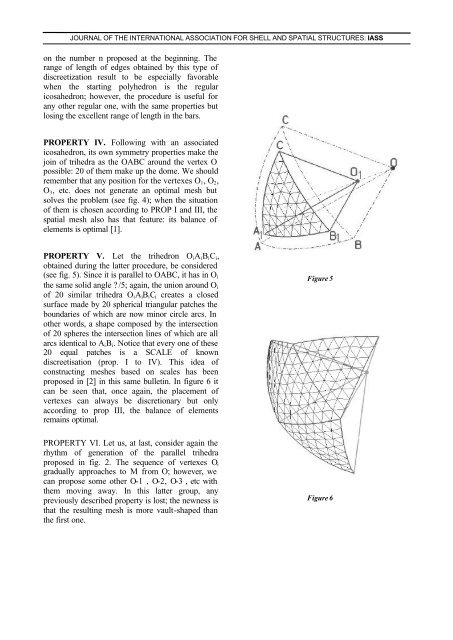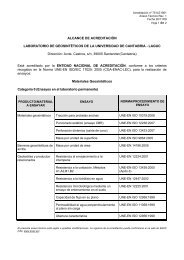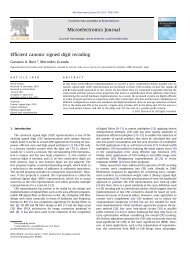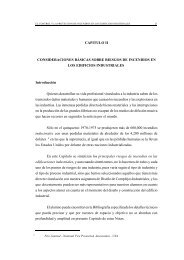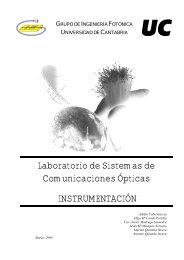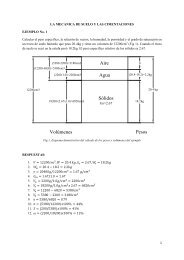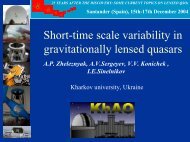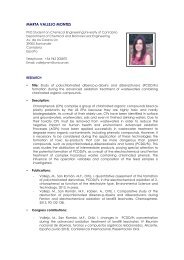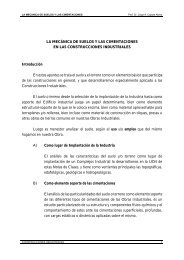designing optimal spatial meshes: cutting by parallel trihedra ...
designing optimal spatial meshes: cutting by parallel trihedra ...
designing optimal spatial meshes: cutting by parallel trihedra ...
You also want an ePaper? Increase the reach of your titles
YUMPU automatically turns print PDFs into web optimized ePapers that Google loves.
JOURNAL OF THE INTERNATIONAL ASSOCIATION FOR SHELL AND SPATIAL STRUCTURES: IASSon the number n proposed at the beginning. Therange of length of edges obtained <strong>by</strong> this type ofdiscreetization result to be especially favorablewhen the starting polyhedron is the regularicosahedron; however, the procedure is useful forany other regular one, with the same properties butlosing the excellent range of length in the bars.PROPERTY IV. Following with an associatedicosahedron, its own symmetry properties make thejoin of <strong>trihedra</strong> as the OABC around the vertex Opossible: 20 of them make up the dome. We shouldremember that any position for the vertexes O 1 , O 2 ,O 3 , etc. does not generate an <strong>optimal</strong> mesh butsolves the problem (see fig. 4); when the situationof them is chosen according to PROP I and III, the<strong>spatial</strong> mesh also has that feature: its balance ofelements is <strong>optimal</strong> [1].PROPERTY V. Let the trihedron O i A i B i C i ,obtained during the latter procedure, be considered(see fig. 5). Since it is <strong>parallel</strong> to OABC, it has in O ithe same solid angle ? /5; again, the union around O iof 20 similar <strong>trihedra</strong> O i A i B i C i creates a closedsurface made <strong>by</strong> 20 spherical triangular patches theboundaries of which are now minor circle arcs. Inother words, a shape composed <strong>by</strong> the intersectionof 20 spheres the intersection lines of which are allarcs identical to A i B i . Notice that every one of these20 equal patches is a SCALE of knowndiscreetisation (prop. I to IV). This idea ofconstructing <strong>meshes</strong> based on scales has beenproposed in [2] in this same bulletin. In figure 6 itcan be seen that, once again, the placement ofvertexes can always be discretionary but onlyaccording to prop III, the balance of elementsremains <strong>optimal</strong>.Figure 5PROPERTY VI. Let us, at last, consider again therhythm of generation of the <strong>parallel</strong> <strong>trihedra</strong>proposed in fig. 2. The sequence of vertexes O igradually approaches to M from O; however, wecan propose some other O-1 , O-2, O-3 , etc withthem moving away. In this latter group, anypreviously described property is lost; the newness isthat the resulting mesh is more vault-shaped thanthe first one.Figure 6


